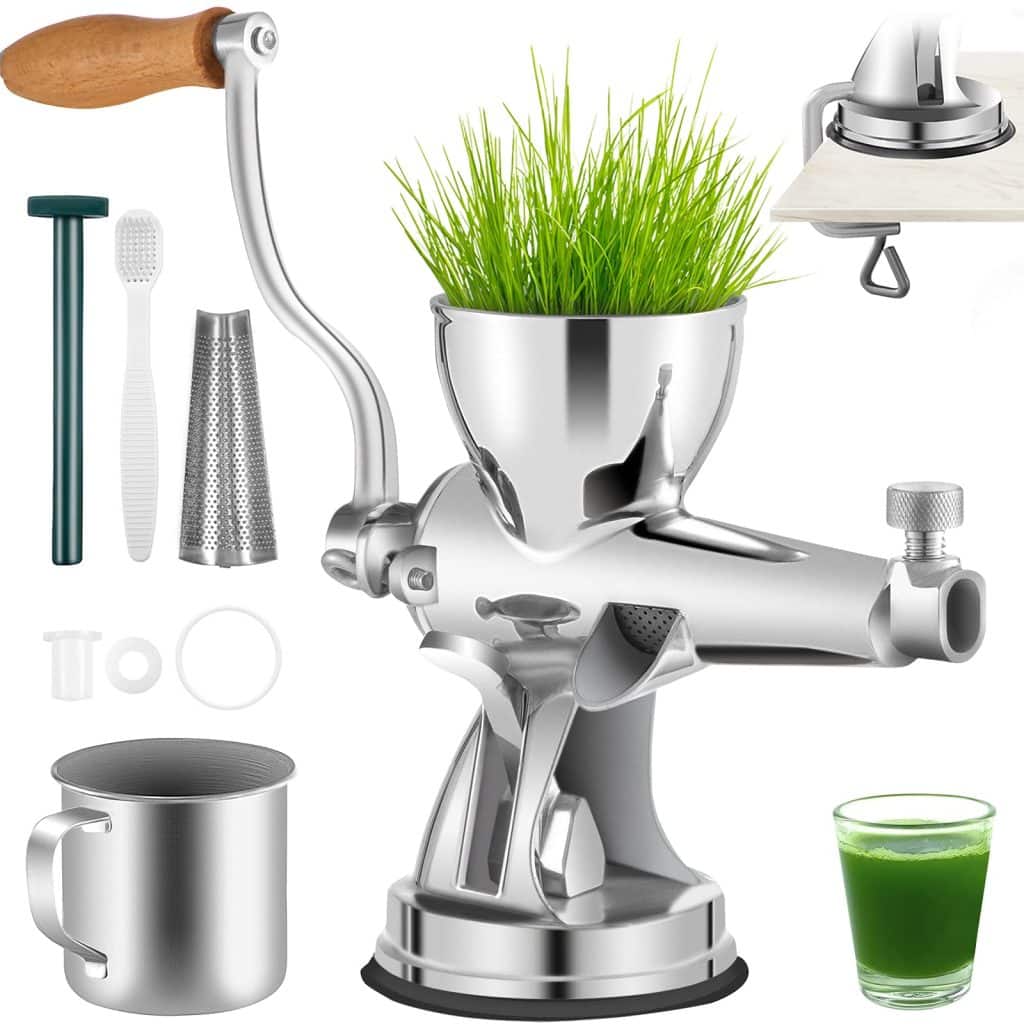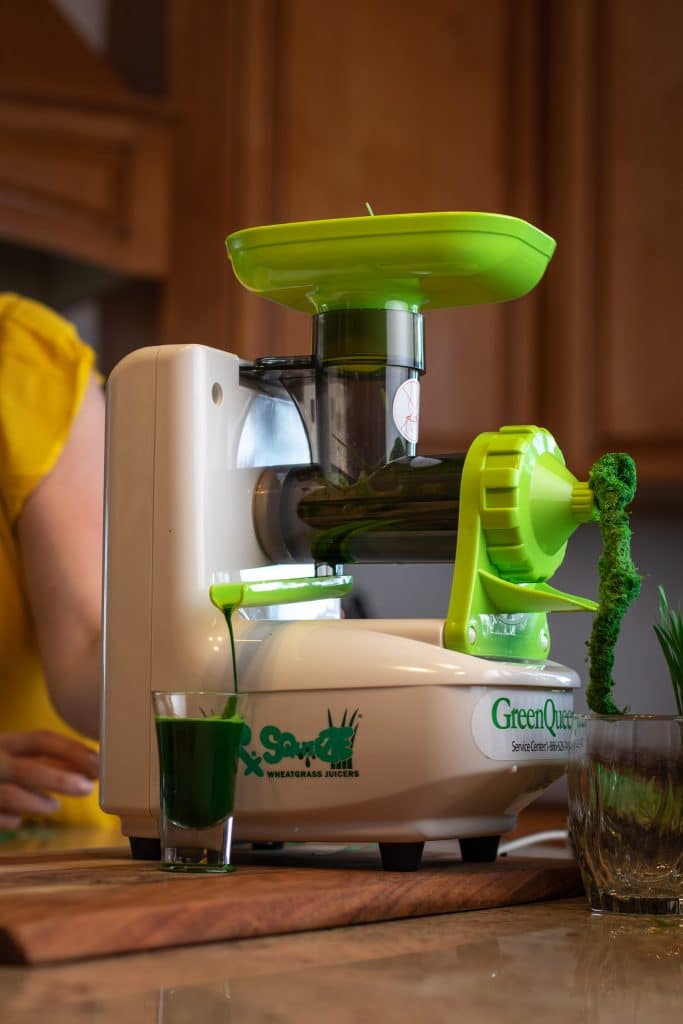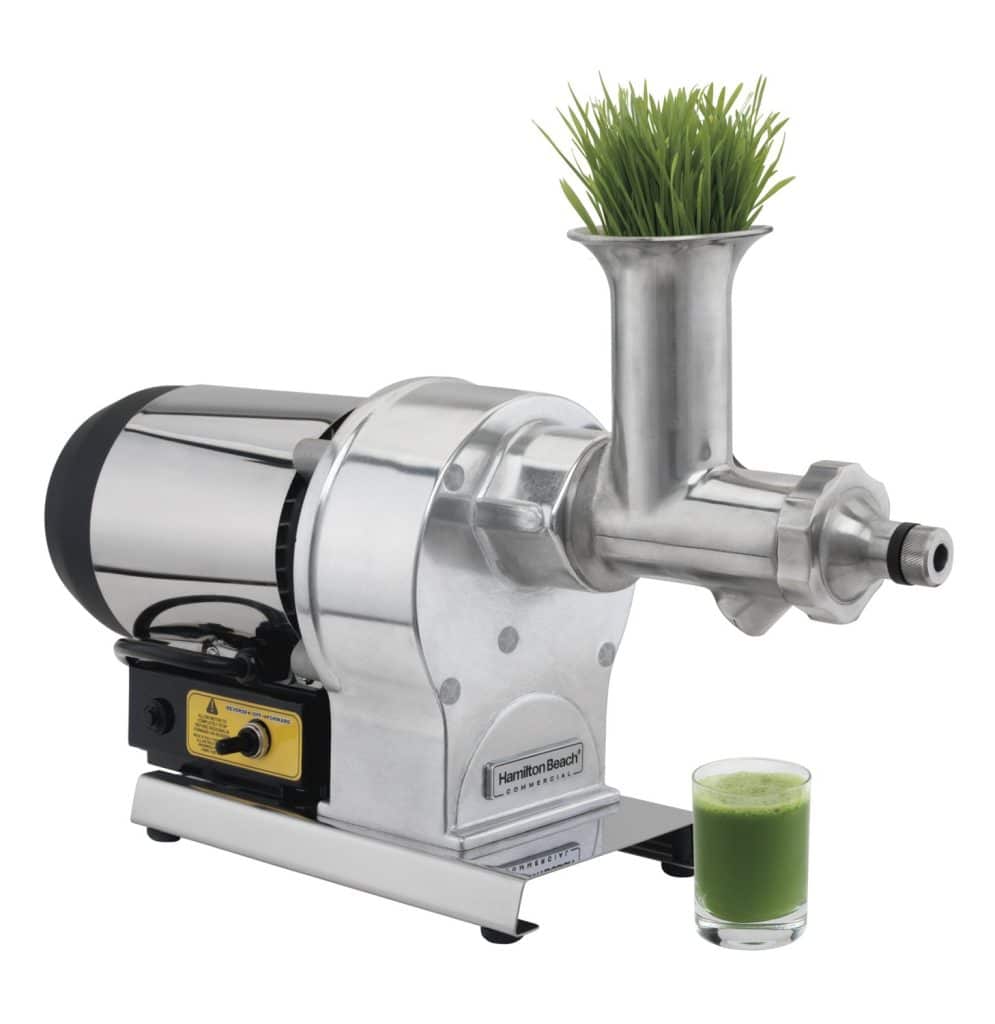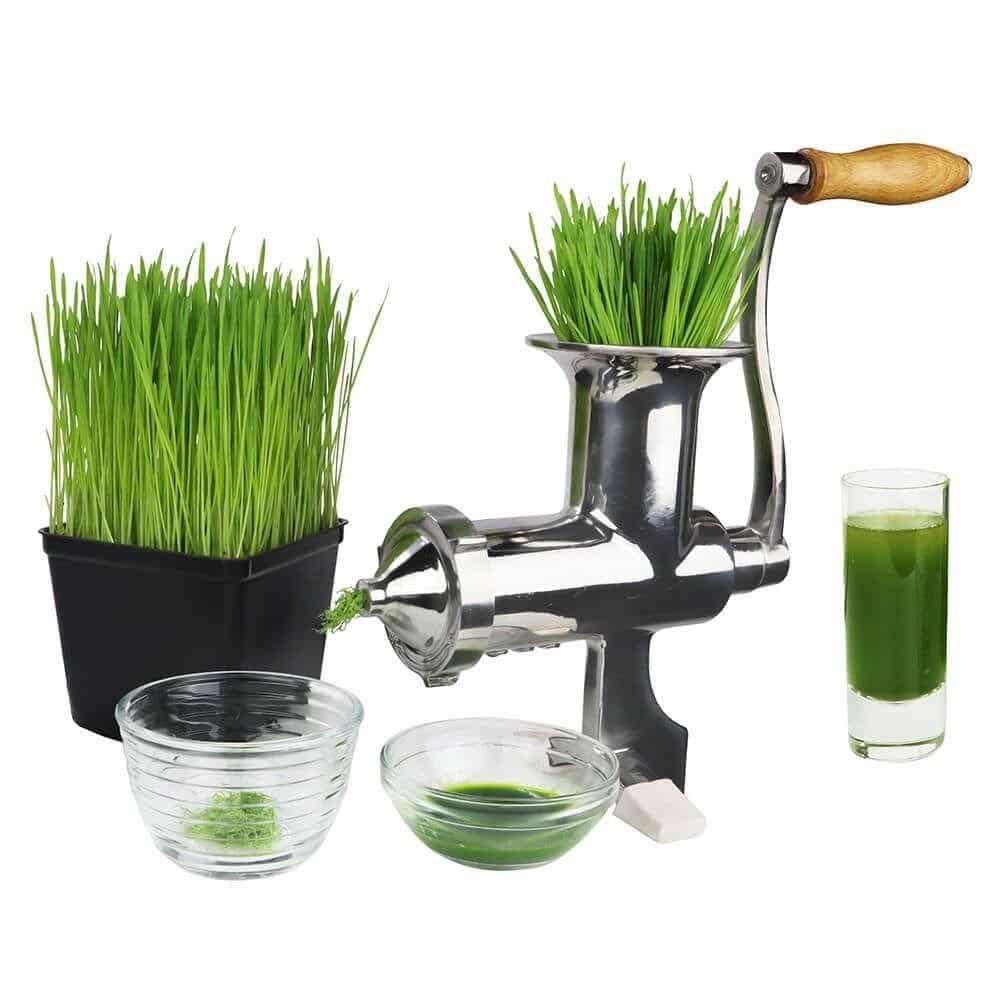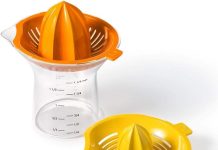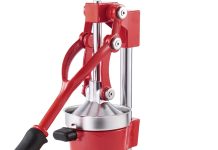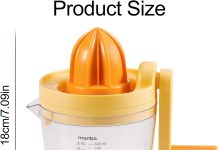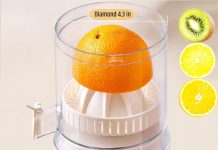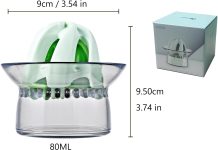Looking to add a healthy dose of wheatgrass to your daily routine but unsure about the right juicer? Look no further, because we’ve got you covered! In this article, we explore the topic of specific juicers for wheatgrass. Whether you’re a juicing newbie or a seasoned pro, we’ll delve into the details to help you make an informed decision. So, get ready to extract all the goodness of wheatgrass with the perfect juicer designed just for that purpose.
Review contents
Choosing the Right Juicer for Wheatgrass
When it comes to juicing wheatgrass, finding the right juicer is crucial. Wheatgrass has a fibrous structure which requires a juicer that can effectively extract the juice while preserving its nutrients. There are several types of juicers that are suitable for wheatgrass, each with their own advantages and disadvantages. In this article, we will explore the three main types of juicers for wheatgrass: masticating juicers, manual juicers, and centrifugal juicers. By understanding the features of each type, you will be able to make an informed decision and choose the perfect juicer for your wheatgrass juicing needs.
Masticating Juicers
Masticating juicers are often referred to as slow juicers or cold press juicers. These juicers use a single auger or gear to crush and squeeze the juice out of the wheatgrass. The slow and gentle process of mastication helps to retain the maximum amount of nutrients and enzymes in the juice, resulting in a high-quality and nutrient-rich juice.
One of the key advantages of masticating juicers is their versatility. While they are excellent for wheatgrass, they can also be used to juice a wide range of fruits and vegetables, making them a great investment for those who enjoy experimenting with different juices. Additionally, masticating juicers have the ability to extract juice from other leafy greens and even herbs, providing you with a broader juicing experience.
Manual Juicers
If you prefer a more hands-on approach to juicing, manual juicers are a fantastic option. These juicers are simple devices that rely on human power to extract the juice from the wheatgrass. Manual juicers often come with a crank or lever mechanism that applies pressure to the grass, squeezing out the juice.
Manual juicers are particularly suitable for those who have limited countertop space or prefer a portable juicer that can be taken on the go. They are also easy to clean and maintain, as they typically have fewer parts compared to other juicers. However, it is worth noting that manual juicers may require more effort and time to extract the same amount of juice as other juicer types.
Centrifugal Juicers
Centrifugal juicers are the most common type of juicers found in many households. These juicers use a high-speed spinning blade to shred the wheatgrass and force the juice out. While centrifugal juicers are not specifically designed for wheatgrass, some models offer the ability to juice wheatgrass effectively.
One of the key advantages of centrifugal juicers is their speed. They are incredibly efficient and can extract juice quickly, making them ideal for those who are always on the go and need a quick and convenient juicing solution. However, it is important to note that centrifugal juicers may not yield as much juice or retain as many nutrients as masticating juicers or manual juicers.
This image is property of Amazon.com.
Factors to Consider When Selecting a Wheatgrass Juicer
Now that we have explored the different types of juicers suitable for wheatgrass, it is important to consider several factors before making your purchase. By evaluating these factors, you will be able to find a juicer that meets your specific needs and preferences.
Efficiency and Yield
Efficiency and yield are crucial factors to consider when selecting a wheatgrass juicer. You want a juicer that can efficiently extract the maximum amount of juice from the wheatgrass, ensuring that you get the most out of your juicing session. Look for juicers that are specifically designed to handle wheatgrass and have a high juice yield.
Ease of Use
Another important factor to consider is the ease of use of the juicer. Juicing should be a simple and enjoyable process, and you don’t want to struggle with a complicated or difficult-to-operate juicer. Look for juicers that have user-friendly features, such as intuitive controls and easy assembly.
Durability
Investing in a durable juicer is essential, especially if you plan to use it frequently. Look for juicers that are made from high-quality materials and have a sturdy construction. Stainless steel or heavy-duty plastic are great options that can withstand the rigors of constant use.
Cleaning and Maintenance
Nobody wants to spend hours cleaning up after juicing. Therefore, it is important to choose a juicer that is easy to clean and maintain. Look for juicers that have removable parts and are dishwasher-safe. Additionally, consider the time it takes to disassemble and clean the juicer to ensure that it fits into your daily routine.
Price
Price is always a factor when it comes to purchasing any appliance. While it is important to stay within your budget, it is also essential to consider the long-term value of the juicer. Cheaper juicers may not be as durable or efficient as more expensive ones, so finding a balance between price and quality is crucial.
This image is property of Amazon.com.
Recommended Juicers for Wheatgrass
After considering the factors mentioned above, we have compiled a list of recommended juicers for wheatgrass. These juicers have been selected based on their efficiency, ease of use, durability, cleaning and maintenance features, and overall value for money.
Omega NC900HDC
The Omega NC900HDC is a top-of-the-line masticating juicer that is perfect for wheatgrass. It has a powerful motor and a dual-stage extraction process that ensures maximum juice yield and nutrient retention. The juicer is easy to use and clean, thanks to its removable parts and dishwasher-safe components.
Tribest GSE-5050 Greenstar Elite
If you’re looking for a masticating juicer that offers exceptional quality and versatility, the Tribest GSE-5050 Greenstar Elite is an excellent choice. It features twin gears that effectively extract juice from wheatgrass while retaining its nutrients. The juicer also offers the ability to juice other fruits and vegetables, making it a versatile addition to your kitchen.
Lexen GP27 Manual Wheatgrass Juicer
For those who prefer a manual juicer, the Lexen GP27 is a fantastic option. It is specifically designed for wheatgrass and offers a simple and efficient way to extract juice. The juicer is compact, lightweight, and easy to assemble and clean, making it perfect for those with limited space or who are always on the go.
Aicok Slow Masticating Juicer
The Aicok Slow Masticating Juicer is an affordable and efficient option for juicing wheatgrass. It has a powerful motor and a slow extraction process that ensures maximum juice yield and minimal oxidation. The juicer is easy to use and clean, and its compact design makes it a great choice for small kitchens.
Breville JE98XL Juice Fountain Plus
If you prefer a centrifugal juicer, the Breville JE98XL Juice Fountain Plus is a popular choice. While it is not specifically designed for wheatgrass, it can effectively juice wheatgrass along with other fruits and vegetables. The juicer has a powerful motor and a large feeding tube, making it quick and convenient to use.
This image is property of www.800wheatgrass.com.
Alternative Ways to Juice Wheatgrass
If you don’t have a juicer specifically designed for wheatgrass or prefer not to invest in one, there are alternative methods to juice wheatgrass. While the results may vary, these methods can still provide you with a fresh glass of wheatgrass juice.
Blenders
Blenders can be used to extract juice from wheatgrass by blending it with water and then straining the mixture through a fine mesh strainer or nut milk bag. This method requires a high-powered blender and may not yield as much juice as a juicer, but it can still be an effective way to enjoy the benefits of wheatgrass.
Food Processors
Food processors can also be used to extract juice from wheatgrass. Simply chop the wheatgrass into small pieces and process it in the food processor until it reaches a smooth consistency. Then, strain the mixture through a fine mesh strainer or nut milk bag to separate the juice from the pulp.
Manual Wheatgrass Juicers
Manual wheatgrass juicers, as mentioned earlier, are specifically designed for wheatgrass and offer a simple and efficient way to juice. These juicers rely on human power to extract the juice and can be a great option for those who prefer a more hands-on approach to juicing.
This image is property of Amazon.com.
Tips for Juicing Wheatgrass
Now that you have chosen the right juicer and know about alternative methods, here are some tips to help you get the best results when juicing wheatgrass.
Select Fresh Wheatgrass
When juicing wheatgrass, it is crucial to use fresh and high-quality wheatgrass. Look for wheatgrass that is vibrant green in color, with no signs of wilting or browning. Fresh wheatgrass will provide better flavor and more nutrients in your juice.
Pre-cut or Grow Your Own
If fresh wheatgrass is not readily available in your area, you can either purchase pre-cut wheatgrass or consider growing your own at home. Pre-cut wheatgrass can be found in some health food stores or online. Growing your own wheatgrass is a rewarding and cost-effective option, as it allows you to have a constant supply of fresh wheatgrass.
Clean and Prep the Wheatgrass Properly
Before juicing, make sure to thoroughly clean the wheatgrass to remove any dirt or debris. Rinse the wheatgrass under cold water and gently pat it dry. It is also a good practice to trim the roots and any yellow or damaged leaves before juicing.
Take It Slow and Steady
When feeding wheatgrass into the juicer, it is important to take it slow and steady. For masticating juicers, feed the wheatgrass in small, manageable portions to ensure efficient and optimal extraction. Avoid overloading the juicer, as this may result in lower juice yield and potential damage to the juicer.
Experiment with Flavor Combinations
Wheatgrass juice on its own can be quite potent and may have a strong grassy taste. To enhance the flavor and make it more enjoyable, consider experimenting with different flavor combinations. You can add a splash of citrus juice, ginger, or apple to balance out the flavors and create a delicious and refreshing wheatgrass juice.
This image is property of cdn.everythingkitchens.com.
Conclusion
Choosing the right juicer for wheatgrass is essential to ensure that you get the most out of your juicing experience. Whether you opt for a masticating juicer, a manual juicer, or a centrifugal juicer, it is important to consider factors such as efficiency, ease of use, durability, cleaning and maintenance, and price. By evaluating these factors and considering our recommended juicers, you will be equipped to make an informed decision.
If you don’t have a juicer specifically designed for wheatgrass, don’t worry! You can still enjoy the benefits of wheatgrass by using alternative methods such as blenders, food processors, or manual wheatgrass juicers. These methods may not yield the same results as a juicer but can still provide you with a fresh glass of wheatgrass juice.
Remember to follow the tips for juicing wheatgrass, such as selecting fresh wheatgrass, cleaning and prepping it properly, and taking it slow and steady when juicing. And don’t be afraid to experiment with different flavor combinations to enhance the taste of your wheatgrass juice.
So go ahead and choose the perfect juicer, whether it’s a masticating juicer, a manual juicer, or a centrifugal juicer, and start enjoying the numerous health benefits of wheatgrass juice! Cheers to a healthier lifestyle!


